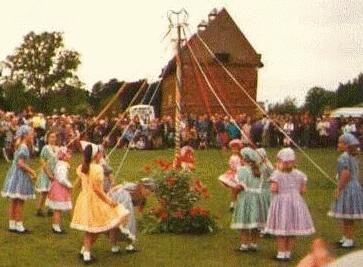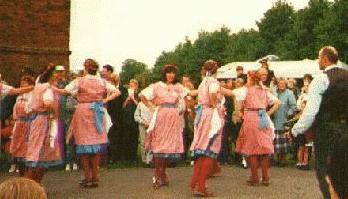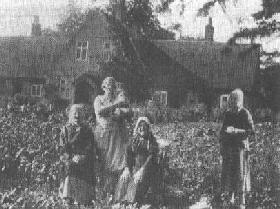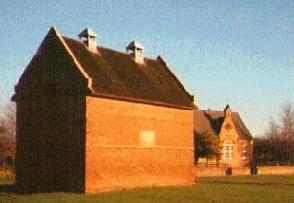
|
|
Clifton Dovecote With
The Old School Building In The Background,
November 1996
|
|
The Clifton Dovecote
For a number of years I used to
travel past Clifton and I often used to try to guess the origins of a strange
building in the centre of the green. It's a very solid, doorless,
tall red-brick structure that to my ignorant eye looked like a cross between
an old school and a church building. I now know that it is fact one
of the largest Dovecotes in England. Pigeons breed throughout
the year and were once housed in dovecote colonies all across the country
as a source of winter meat. This particular dovecote has an incredible
2,300 nesting places all of which go 14 inches into the wall. There
is a war memorial plaque on the centre of the south wall ( visible on the
picture as a bright square ) listing the areas casualties from the first
world war.
|
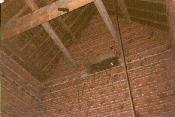 |
|
The Dovecote Interior
|
|
The interior is very dark and divided
into two sections by a wall half way along the buildings
length, just inside the entrance. |
The Old Clifton School
The old Clifton School building is today used as a village hall/community
centre ( not to be confused with the former Clifton
family stately home ). A plaque on the front of the building
reads 'These schools and school-houses were erected by Henry
Robert Clifton, Esquire, and the corner stone was laid by Mrs Clifton
on the 3rd day of November, 1871.' The school opened
in April, 1872 with 48 children in attendance. A year later
the school started to run a night school, initially attended by
13 men. The school finally closed in 1956 when the areas modern
schools ( Brooksby, Farnborough etc. ) were constructed for children
in the new Clifton Housing Estates.
|
|
|
|
